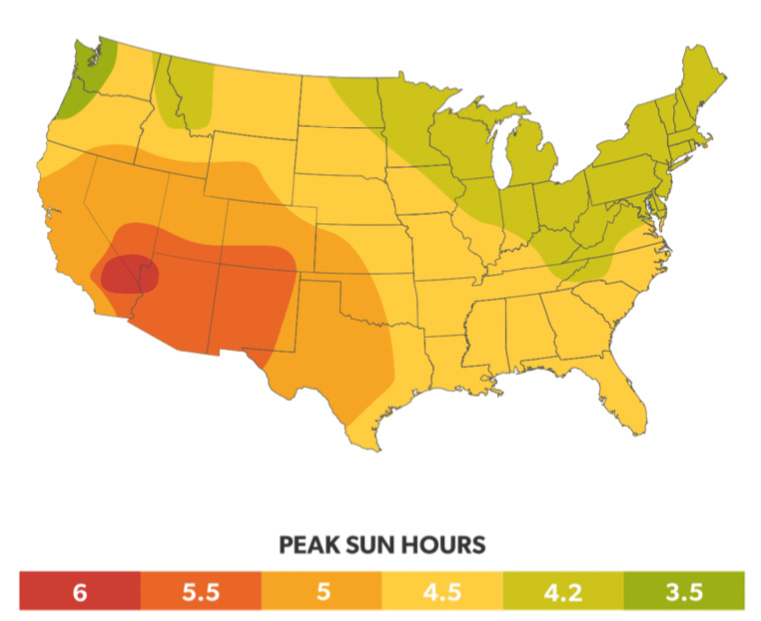A Quick Note:
The Next Giant Leap uses some terms surrounding energy that you might be a little unfamiliar with. We’ll take a minute to explain these terms (and their use in some basic arithmetic) more clearly to make it easier to grasp how Scarcity Zero works.
Energy vs. Power: Power quantifies the potential amount of energy that could be exerted in a given moment. Energy is the aggregate total of power exerted over time. Both power and energy are denoted in “watts,” with power denoted in-moment and energy over time. Watts is a metric unit of measure (1,000 watts = 1 kilowatt = 0.001 megawatt).
For example: if you turned on a 60-watt light bulb for ten seconds, that light bulb would have had 60 watts of power flowing through it. Yet it consumed 600 watt-seconds of energy (60 watts x 10 seconds). If it was on for an hour, it would have consumed 60 watt-hours (3,600 watt-seconds). If it was on for one year (8,760 hours) it would have consumed a total of 525,600 watt-hours of energy. That’s equivalent to 525.6 kilowatt-hours. At any given moment, though, it only had 60 watts of power flowing through.
Solar Power: In determining the effectiveness of solar power, we’re going to need to establish some baselines so we’re measuring consistently. Solar panels vary in size, sophistication and effectiveness, and there are several factors at play that determine both.
 Peak sun hours is a unit of measure for solar panel generation capacity. It quantifies the aggregate total of solar energy that reaches a region in a day, denoted in hours of maximum solar intensity. Let’s say the sun shines for 13 hours a day over a region, depending on the season. That solar intensity may be equivalent to a certain number of “peak sun hours” of the sun at its maximum output (say at noon). Most regions of the country are exposed to an annual average of between 4.5-5.5 peak sun hours of solar energy per day. For our purposes here, we’ll split the middle and assume a total of five peak sun hours per day when doing our calculations for solar.
Peak sun hours is a unit of measure for solar panel generation capacity. It quantifies the aggregate total of solar energy that reaches a region in a day, denoted in hours of maximum solar intensity. Let’s say the sun shines for 13 hours a day over a region, depending on the season. That solar intensity may be equivalent to a certain number of “peak sun hours” of the sun at its maximum output (say at noon). Most regions of the country are exposed to an annual average of between 4.5-5.5 peak sun hours of solar energy per day. For our purposes here, we’ll split the middle and assume a total of five peak sun hours per day when doing our calculations for solar.
Solar panel output varies by sophistication, size, region and efficiency. So, we’ll have to establish some assumptions based on the myriad solar options available. The SunPower E20 solar panel is a solid quality solar panel available on the market today. With a nominal power output of 327 watts, it is 61.4 inches wide and 41.2 inches tall, coming to a surface area of about 17.5 square feet.[11] That translates to roughly 18.7 watts of power per square foot. Now let’s convert that to energy. If we circle back to the energy vs. power section on the prior page, 18.7 watts of power exerted over an hour is measured as 18.7 watt-hours. Assuming five peak sun hours in a day, that totals 93.5-watt hours generated per day. Extrapolated over a calendar year, that totals 34,127.5 watt-hours.
Denoted in kilowatt-hours (the standard most energy is measured in), that comes to 34.12 kilowatt-hours of energy generated per square foot, per year. To play it safe, however, we’ll cut that figure by 10%, and estimate that one square foot of solar panel surface can reliably generate 30 kilowatt-hours per year. As there are 27.88 million square feet in one square mile, we will conclude that one square mile of solar panels would reliably generate 836.5 million kilowatt-hours in a year.
Assumption Totals:
One square foot of solar generates: 30 kilowatt-hours per year.
One square mile of solar generates: 836.5 million kilowatt-hours per year.
According to the Energy Information Administration as of 2017, the average U.S. household consumes 10,400 kilowatt-hours per year.[12]
With these assumptions explained and these figures established, we’ll circle back to the revolutionary benefits of integrated renewables and how they can help build a clean energy future.